Optimizing Product Handling with Spiral Stretch Wrappers: A Comprehensive Implementation Guide

Introduction: Enhancing Efficiency with Stretch Wrapping
In modern production and logistics, optimizing product handling is crucial for maintaining operational flow and controlling costs. A key technology in achieving this is the spiral stretch wrapper, often referred to as an orbital or horizontal stretch wrapper. These versatile machines are specifically designed to secure and stabilize long, bulky, or irregularly shaped products for safe transport and storage. However, maximizing the return on investment requires a well-planned and executed implementation phase.
This guide provides detailed instructions for businesses planning to implement spiral stretch wrappers to improve product handling efficiency. We cover everything from understanding the equipment's core benefits to installation, staff training, and ongoing maintenance, ensuring a smooth and successful integration into your operations.
1. Understanding Spiral Stretch Wrappers and Their Function
A spiral stretch wrapper is a specialized packaging machine that applies stretch film in a spiral pattern around the length of a product. Unlike traditional turntable wrappers designed for palletized loads, spiral wrappers are ideal for items like pipes, lumber, extrusions, doors, windows, and furniture that are often difficult to handle or palletize conventionally. The machine passes a film carriage around and along the product, applying tensioned film to create a secure, protective wrap.
Key Benefits of Implementing Spiral Stretch Wrappers:
- Improved Load Stability: Provides exceptional containment for long, unstable, or awkwardly shaped items, reducing shifting during handling and transit.
- Reduced Manual Labor: Automates the wrapping process, decreasing reliance on manual wrapping, which is often slow, inconsistent, and physically demanding.
- Optimized Film Usage: Modern wrappers offer precise tension control and pre-stretch capabilities, minimizing film consumption and material costs compared to manual methods.
- Enhanced Product Protection: Creates a tight barrier against dust, moisture, dirt, and surface damage during storage and shipping.
- Increased Throughput: Wraps products significantly faster than manual methods, boosting overall packaging line speed.
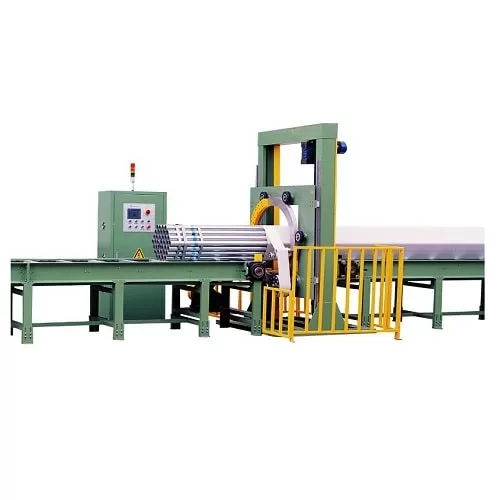
pipe horizontal orbital wrapping machine 2. The Critical Role of the Implementation Phase
The implementation phase is foundational to achieving the long-term operational efficiency promised by a spiral stretch wrapper. A poorly managed implementation can negate the benefits, leading to operational bottlenecks, unexpected downtime, inconsistent wrap quality, and potential safety risks. Proper planning addresses these challenges proactively.
Common Implementation Challenges to Avoid:
- Incorrect Machine Specification: Choosing a machine not suited for the product dimensions, weight, or required throughput.
- Poor Installation & Configuration: Improper setup leading to suboptimal performance or machine errors.
- Inadequate Operator Training: Staff lacking the knowledge to operate, adjust, or perform basic troubleshooting.
- Insufficient Workflow Integration: The wrapper causing delays or disrupting upstream/downstream processes.
- Neglected Maintenance Planning: Failure to establish routine checks, leading to premature wear or breakdowns.
A strategic, step-by-step approach is essential to mitigate these risks and ensure the wrapper delivers maximum value.
3. Assessing Your Specific Product Handling Needs
Before selecting a machine, conduct a thorough assessment of your product handling requirements. Understanding the specifics of your application is crucial for choosing the right equipment and planning its integration.
Key Assessment Questions:
- Product Characteristics:
- What are the typical dimensions (length, width, height) and weight ranges of the products?
- Are the products fragile, sensitive to surface damage, or require specific support?
- Do products have sharp edges or protrusions that could puncture standard film?
- Throughput Requirements:
- How many products per hour/shift/day need to be wrapped?
- Is the production flow continuous or batch-based?
- Operational Environment:
- What are the space constraints in the intended installation area?
- Are there specific environmental factors (dust, temperature, moisture)?
- Current Handling Process:
- What are the bottlenecks or inefficiencies in your existing wrapping method?
- What level of automation is desired (semi-automatic vs. fully automatic)?
Answering these questions helps define the necessary machine capabilities and configuration.
4. Selecting the Right Spiral Stretch Wrapper Model
With your requirements defined, you can select the most suitable spiral stretch wrapper. Various models exist, differing in ring size, speed, automation level, and specific features. Consulting with experienced suppliers like Fhopepack can provide valuable insights.
Key Features and Specifications to Consider:
- Ring Diameter: Must be large enough to accommodate the maximum cross-section of your products.
- Conveyor System: Type (roller, belt), speed, height, and load capacity must match your products and workflow. Powered conveyors are essential for automation.
- Wrapping Speed: Rated in RPM (rotations per minute) of the ring and linear speed of the conveyors. Ensure it meets your throughput needs.
- Film Delivery System:
- Pre-stretch: Percentage of film elongation (e.g., 250-300%) significantly reduces film costs. Look for powered pre-stretch systems.
- Tension Control: Ability to adjust film tension electronically for different product types and wrap stages (e.g., leading/trailing edge).
- Automation Level:
- Semi-Automatic: Operator starts the cycle, manually attaches/cuts film.
- Fully Automatic: Includes automatic film clamp, cut, and seal mechanisms, often integrated with infeed/outfeed conveyors.
- Control System: User-friendliness, programmable wrap recipes, diagnostic capabilities.
- Safety Features: Emergency stops, safety fencing, light curtains compliant with industry standards (e.g., OSHA guidelines).
Carefully compare specifications against your assessed needs to make an informed choice.
5. Preparing the Installation Site for Optimal Performance
Proper site preparation is crucial before the spiral stretch wrapper arrives. A well-prepared area ensures safe installation, efficient operation, and easy maintenance access.
Installation Site Checklist:
- Space Allocation: Ensure adequate clearance around the machine for operation, loading/unloading, film roll changes, and maintenance access (check manufacturer's footprint diagram).
- Foundation: The floor must be level and capable of supporting the machine's weight, especially during operation.
- Utilities:
- Power: Verify voltage, phase, and amperage requirements match the machine's specifications. Ensure a dedicated circuit and properly installed disconnects.
- Compressed Air: Check pressure (PSI/Bar) and volume (CFM/lpm) requirements if the machine uses pneumatic components (e.g., film clamps, cutters). Ensure clean, dry air.
- Workflow Integration: Position the wrapper logically within the production flow to minimize travel distance for products arriving from upstream processes and departing to downstream areas (e.g., staging, shipping).
- Safety Zones: Clearly mark operator zones, forklift paths, and emergency exit routes around the machine. Install physical guarding or light curtains if not integrated into the machine.
Addressing these points beforehand prevents delays and complications during installation.
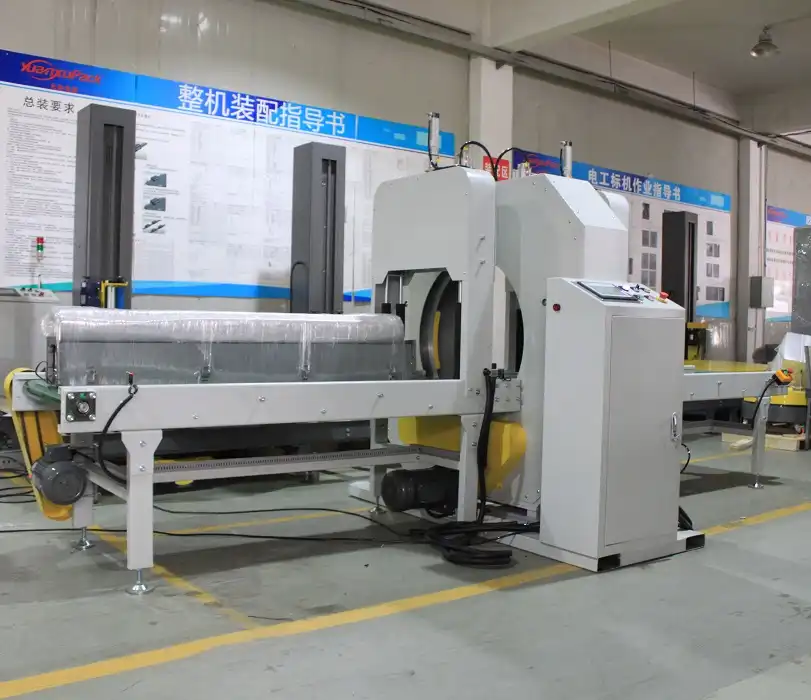
6. Executing the Initial Setup and Configuration
Once the machine is positioned, the initial setup and configuration phase begins. Accuracy here is vital for performance and safety. While professional installation by the supplier is often recommended, understanding the process is beneficial.
Best Practices for Setup and Configuration:
- Follow Manufacturer's Manual: Adhere strictly to the installation and setup procedures outlined by the manufacturer.
- Mechanical Checks: Ensure all components are securely fastened, conveyors are level and aligned, and safety guards are correctly installed.
- Utility Connections: Connect power and compressed air according to specifications, verifying correct phasing and pressure.
- Initial Power-Up & Testing: Perform basic functional tests (e.g., conveyor movement, ring rotation, emergency stops) before loading film or product.
- Film Loading & Threading: Correctly load the stretch film roll and thread it through the pre-stretch rollers and carriage as per the diagram. Incorrect threading is a common cause of film breaks.
- Parameter Configuration: Program initial wrap settings via the control panel:
- Conveyor Speed: Adjust to match line speed or desired throughput.
- Ring Speed (RPM): Controls how fast the film is applied.
- Film Tension: Set appropriately for product stability without causing damage.
- Film Pre-stretch Ratio: Set according to film type and machine capability.
- Wrap Counts: Define the number of wraps for leading/trailing edges and main body.
- Overlap Percentage: Controls how much each wrap layer covers the previous one.
- Test Wraps: Run several test cycles with actual products, observing the wrap quality, film tension, and machine operation. Fine-tune parameters as needed to achieve a secure, consistent wrap without damaging the product or wasting film.
7. Implementing Comprehensive Staff Training and Safety Protocols
Effective staff training is paramount for safe operation, consistent performance, and maximizing the lifespan of your spiral stretch wrapper. Untrained operators can cause downtime, damage the machine, or create safety hazards.
Key Training Components:
- Basic Operation:
- Starting/stopping the machine.
- Selecting pre-programmed wrap recipes.
- Loading and unloading products safely.
- Properly loading and threading stretch film.
- Parameter Adjustments:
- Understanding how to adjust tension, speed, and wrap counts for different products (within defined limits).
- Saving new wrap programs (if applicable and authorized).
- Safety Procedures:
- Location and use of all emergency stop buttons.
- Understanding machine guarding, light curtains, and safety interlocks.
- Lockout/Tagout (LOTO) procedures for maintenance and clearing jams.
- Awareness of pinch points and moving parts.
- Basic Troubleshooting:
- Identifying common error codes or alarm signals.
- Clearing minor film breaks or jams safely.
- Knowing when to escalate issues to maintenance personnel.
- Routine Operator Maintenance:
- Daily checks (e.g., visual inspection, cleaning sensors).
- Keeping the wrapping area clean and free of debris.
Maintain training records and conduct refresher courses periodically or when new staff are assigned.
8. Seamlessly Integrating the Wrapper into Existing Workflows
For the spiral stretch wrapper to deliver maximum efficiency, it must be seamlessly integrated into your existing production or logistics workflows. It should complement, not hinder, the overall process flow.
Strategies for Effective Workflow Integration:
- Synchronize Speeds: Match the wrapper's conveyor speed and cycle time with the output rate of upstream processes and the capacity of downstream processes to avoid bottlenecks or starvation.
- Optimize Material Flow: Design efficient pathways for products moving to and from the wrapper. Consider automated conveyors, AGVs, or optimized forklift routes.
- Buffer Management: Implement small buffer zones before and after the wrapper if process speeds fluctuate, ensuring continuous operation.
- Data Integration (Optional): For advanced operations, integrate the wrapper's control system with plant-level MES or SCADA systems for performance monitoring, recipe management, and fault tracking.
- Minimize Manual Handling: Automate product transfer onto the infeed conveyor and removal from the outfeed conveyor wherever feasible to reduce labor and cycle time.
Continuously monitor the integrated system and make adjustments to optimize flow and efficiency.
9. Establishing Routine Maintenance Best Practices
Regular preventive maintenance is essential to ensure the long-term reliability, performance, and safety of your spiral stretch wrapper. A proactive maintenance schedule minimizes unexpected breakdowns and costly repairs.
Key Maintenance Tasks and Schedules:
- Daily Checks (Operator):
- Visual inspection for loose parts, debris, or damage.
- Check film roll status and threading.
- Clean sensors and reflectors.
- Verify emergency stops are clear and functional.
- Weekly Checks (Maintenance Staff/Trained Operator):
- Clean film carriage rollers and pre-stretch assembly.
- Inspect drive chains/belts for proper tension and wear.
- Check pneumatic system filters and lubricators (if applicable).
- Inspect film cutting/clamping mechanism for sharpness and alignment.
- Monthly/Quarterly Checks (Maintenance Staff):
- Lubricate bearings, chains, and other specified points according to the manufacturer's schedule.
- Inspect electrical connections and enclosures.
- Check wear parts (e.g., rollers, belts, cutter blades) and replace if necessary.
- Verify safety interlocks and guarding integrity.
- Calibrate film tension sensors if needed.
Always follow the manufacturer's specific maintenance recommendations and use appropriate safety procedures (LOTO) during maintenance activities. Keep detailed maintenance logs.
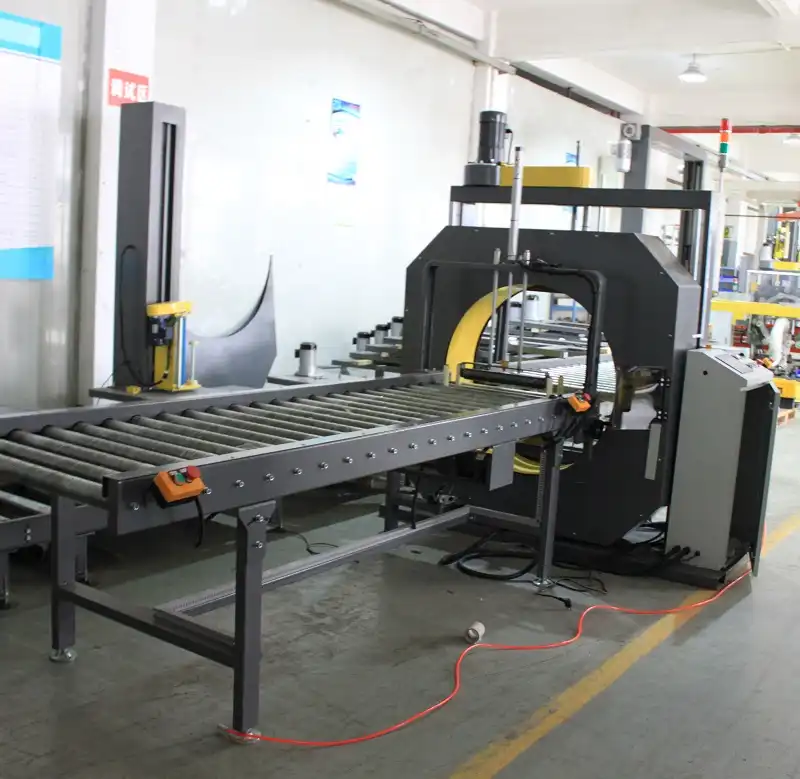
10. Realizing Long-Term Operational Benefits
A properly implemented and maintained spiral stretch wrapper delivers significant long-term operational benefits that contribute directly to the bottom line and overall business efficiency.
Key Strategic Advantages:
- Reduced Product Damage: Consistent, secure wrapping minimizes damage during handling and transit, lowering costs associated with returns, rework, and replacements.
- Lower Labor Costs: Automating the wrapping process frees up personnel for higher-value tasks, reducing direct labor expenses associated with packaging.
- Material Cost Savings: Optimized film usage through pre-stretch and tension control leads to significant savings on stretch film consumables.
- Increased Throughput & Capacity: Faster wrapping cycles allow for higher production volumes without adding shifts or personnel, improving responsiveness to customer demand.
- Improved Workplace Safety: Eliminates ergonomic risks associated with manual wrapping (bending, stooping, repetitive motion), reducing potential worker compensation claims.
- Enhanced Professionalism: Consistently wrapped products present a more professional image to customers.
These benefits contribute to a strong return on investment (ROI) and enhance competitive positioning.
11. Troubleshooting Common Spiral Stretch Wrapper Issues
Even well-maintained machines can experience occasional issues. Training operators and maintenance staff to identify and resolve common problems quickly minimizes downtime.
Common Issues and Potential Solutions:
- Film Breaking:
- Causes: Tension too high, film nicked or poor quality, sharp product edges, dirty rollers, incorrect threading.
- Solutions: Reduce tension, inspect/replace film roll, ensure correct threading path, clean rollers, consider edge protection for products.
- Inconsistent Wrap / Load Shifting:
- Causes: Tension too low, insufficient wrap overlap or revolutions, incorrect wrap pattern for the load.
- Solutions: Increase tension, adjust wrap parameters (overlap, revolutions), ensure product is centered.
- Film Tail Not Secured:
- Causes: Issue with film clamp/cut/wipe mechanism (automatic machines), insufficient tail length.
- Solutions: Inspect/clean/adjust clamp/cut/wipe components, check air pressure (if pneumatic), adjust parameters.
- Machine Stops Mid-Cycle:
- Causes: Safety sensor blocked or misaligned, emergency stop activated, motor overload, control system fault.
- Solutions: Check control panel for error codes, inspect sensors/E-stops, check for obstructions, reset motor overloads, consult manual/supplier if fault persists.
- Poor Film Stretch Performance:
- Causes: Worn pre-stretch rollers, incorrect pre-stretch settings, wrong film type.
- Solutions: Inspect/replace rollers, verify settings, ensure correct film specification is used.
Always prioritize safety (LOTO) before attempting troubleshooting or maintenance. Refer to the machine's manual for specific guidance.
12. Customizing Your Spiral Stretch Wrapper for Peak Performance
Most spiral stretch wrappers offer customization options to tailor performance to specific application needs, further enhancing efficiency and protection.
Potential Customization Areas:
- Film Specifications: Experiment with different film types (e.g., high-performance, puncture-resistant) and thicknesses (gauge) to optimize containment and cost for specific products.
- Wrap Programs/Recipes: Develop and save multiple wrap programs tailored to different product types, sizes, or stability requirements. This ensures consistency and simplifies operator tasks.
- Top Sheet Applicators: For loads requiring top protection from dust or moisture, an integrated top sheet dispenser can automatically apply a sheet before or during the wrap cycle.
- Roping Devices: Creates a concentrated "rope" of film at the top and/or bottom of the load for extra stability, especially for very tall or unstable products.
- Integrated Weighing Systems: Load cells integrated into the conveyor can weigh products during the wrapping process for shipping documentation or quality control.
- Environmental Packages: Options for operation in cold storage environments or areas with high dust levels.
Discuss available customization options with your supplier based on your specific challenges and goals.
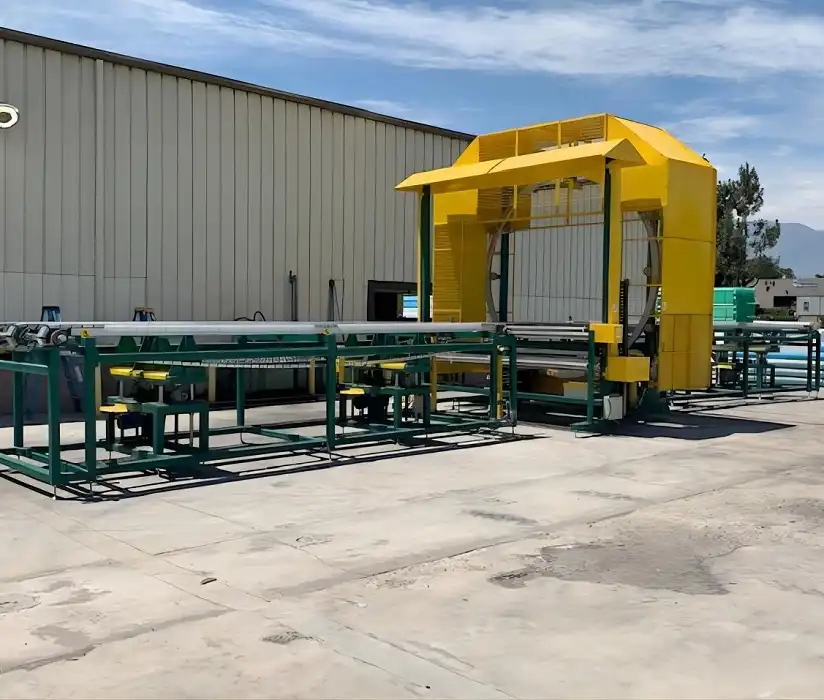
Conclusion: Strategic Implementation for Lasting Efficiency
Successfully implementing a spiral stretch wrapper goes beyond simply purchasing and installing the machine. It requires a strategic approach encompassing thorough needs assessment, careful selection, meticulous site preparation, proper setup, comprehensive training, seamless workflow integration, and diligent maintenance.
By following the guidelines outlined in this article, businesses can ensure their investment in spiral stretch wrapping technology translates into tangible benefits: improved product handling efficiency, enhanced load security, reduced operational costs, increased throughput, and a safer working environment. A well-implemented spiral wrapper is not just a piece of equipment; it's a vital component of a streamlined, cost-effective, and scalable packaging operation ready to meet future demands.
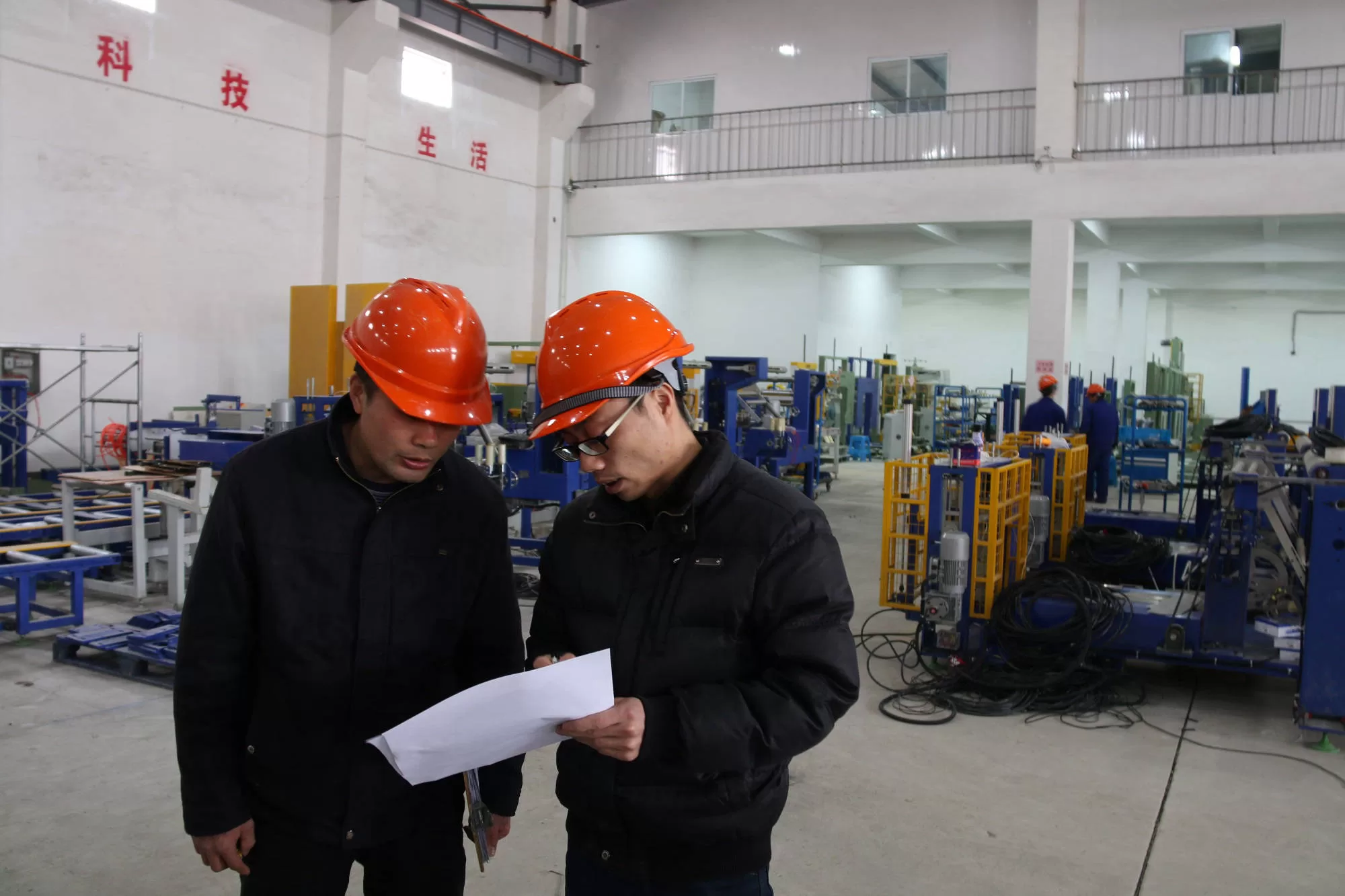
Get Your Best Solution !